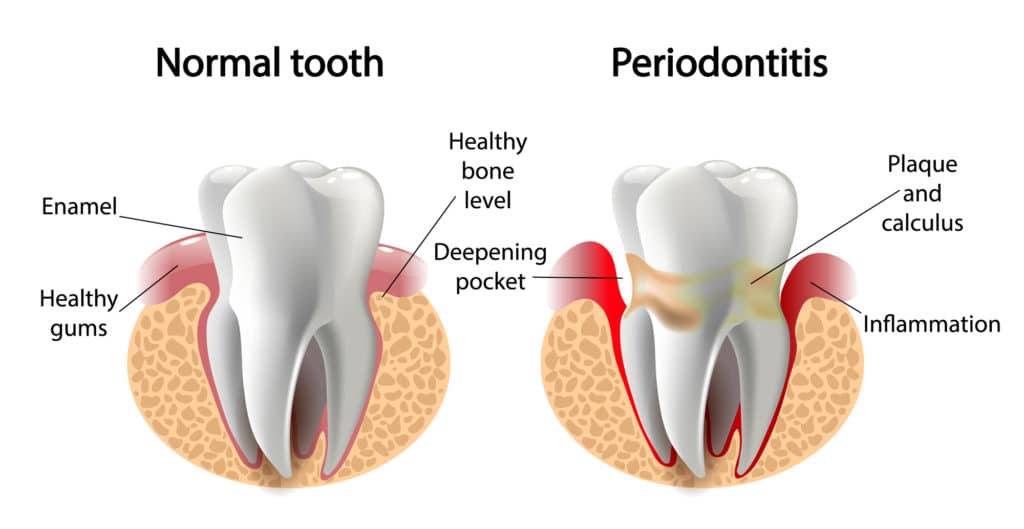
Periodontitis, also called gum disease, is a serious and, unfortunately, a common infection in the gums. The root cause of periodontitis an imbalance of bacteria in the mouth caused by plaque buildup, but several factors can contribute to the development of gum disease, such as:
- Tobacco use
- Poor nutrition
- Age
- Genetics
- Chronic health conditions
Mild symptoms of the disease appear at first, but when it is left untreated, the signs become more and more apparent.
In its earliest stages, gum disease is treatable which is why it is so important to visit the dentist every six months for cleanings and exams. The later stages cannot be treated, but the dentist can help keep the disease from developing.
How do you know if you have periodontitis? Our Austin dentist, Dr. Helen Ragsdale, discusses the stages of gum disease, the most common symptoms, and treatments in this blog.
Stage #1: Gingivitis
The first stage of gum disease is typically characterized by red, swollen, and bleeding gums. However, many times these symptoms are so mild that they go unnoticed.
When gingivitis first appears, better oral hygiene can get rid of it. As it advances, or if the symptoms don’t go away, a regular dental cleaning should rid the mouth of any plaque or tartar that is lingering around the gum line.
Stage #2: Slight periodontitis
In the second stage of gum disease, the original symptoms elevate slightly, and pockets of bacteria form between the teeth and gums. As the immune system fights against the infection, the disease-causing bacteria begin to reproduce.
This stage calls for professional treatment. Your dentist will most likely recommend a scaling and root planing—a conservative procedure where the dentist scrapes away plaque and tartar and smooths the rough surfaces of the teeth. As the gums heal, they will begin to shrink and the periodontal pockets will go away. The periodontitis can then be maintained at home with routine brushing and flossing.
Stage #3: Moderate periodontal disease
Symptoms for moderate periodontitis include:
- Bleeding gums
- Pain around teeth
- Gum recession
- Bad breath
- Bone loss
- Inflammation throughout the body
Again, many of these signs may go unnoticed; but, at this point, the disease has infiltrated the bloodstream and spread throughout the body.
Scaling and root planing will most likely be a first-step treatment, then your dentist may recommend another treatment, like laser pocket decontamination—an advanced, non-surgical treatment that eliminates aggressive bacteria and aids in healing.
Stage #4: Advanced periodontitis
In its final stage, periodontitis is extremely aggressive and destructive. The bacteria attack the bones and ligaments that hold teeth in place. As a result, the teeth may become loose. Patients also continue to experience bleeding, irritated gums, gum recession, and bad breath. Additionally, pockets of pus called periodontal abscesses may also form in the gum tissue.
At this point, the dentist will create a treatment plan that includes multiple procedures to get your smile back to health. The treatment plan will likely include scaling and root planing and laser pocket decontamination.
State-of-the-Art Treatment for Periodontitis in Austin
Early intervention is the best-case scenario when it comes to gum disease. However, that isn’t always the case. When gum disease moves past the gingivitis stage, surgical treatment is usually necessary. That’s why it is so important to choose a dentist who offers conservative, modern dental treatments like laser dentistry.
At Austin Laser Dentist, Dr. Helen Ragsdale uses dental lasers to treat all types of dental issues, including periodontitis. Contact our office today at (512) 346-4690 to schedule an appointment.
